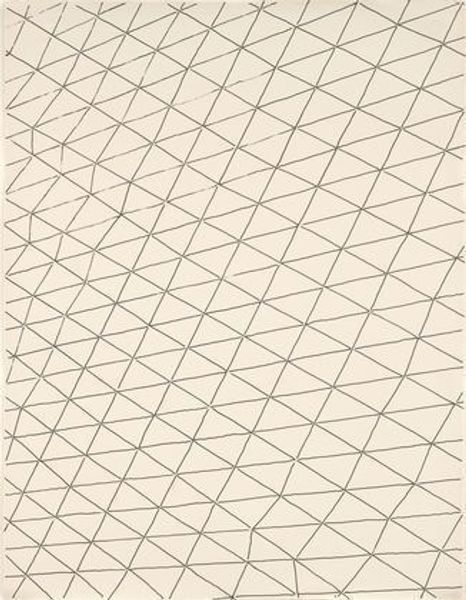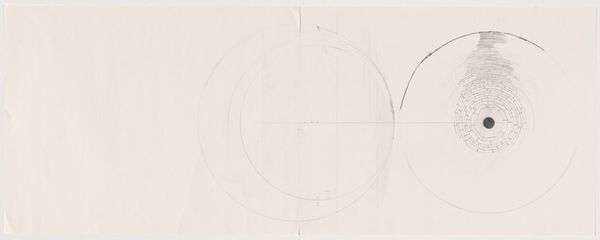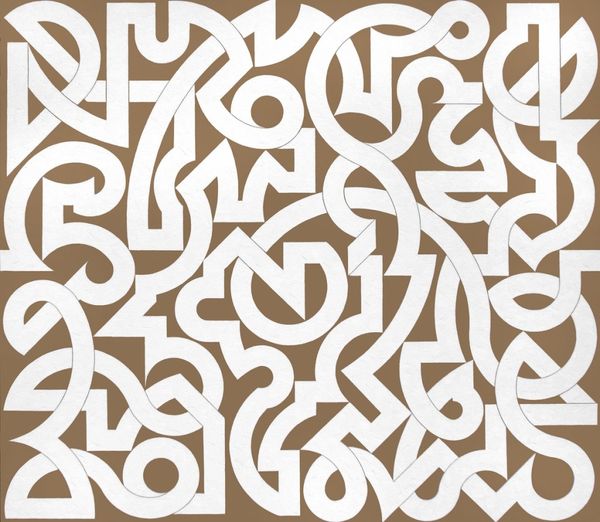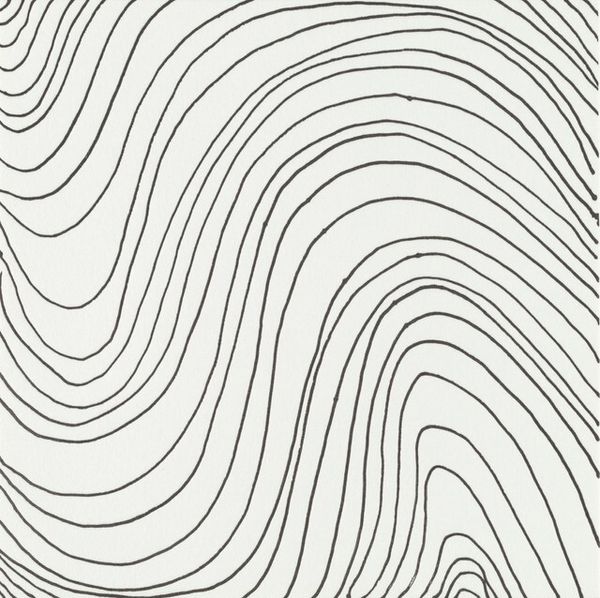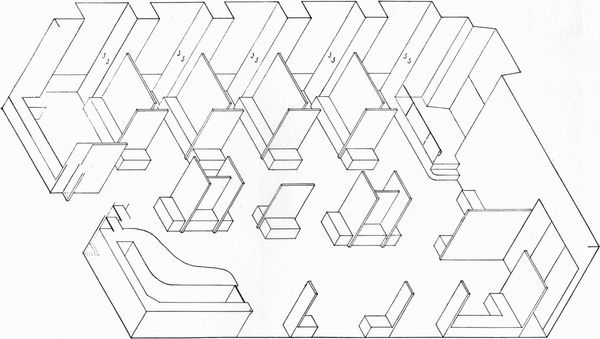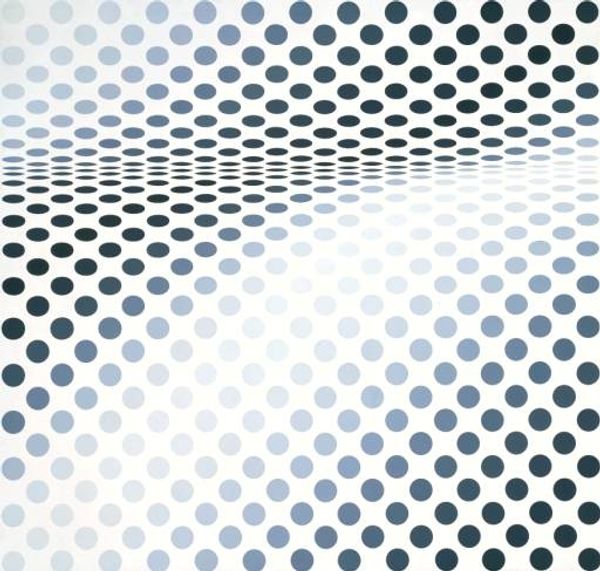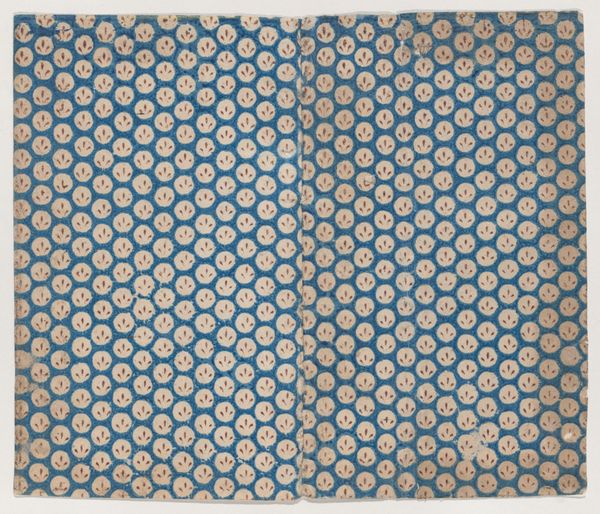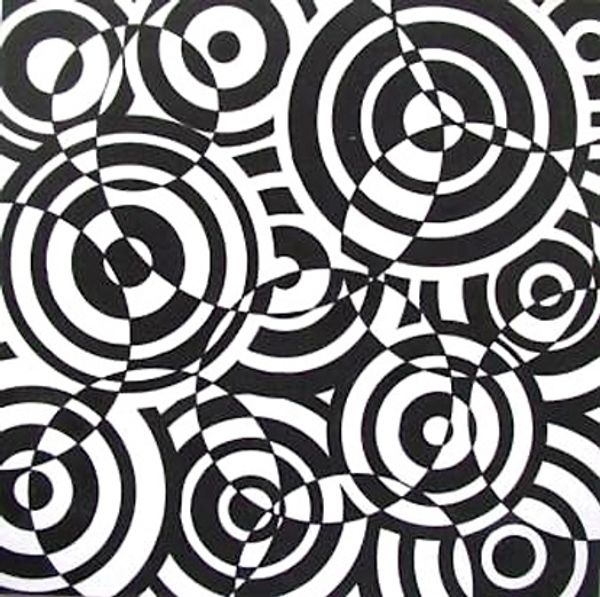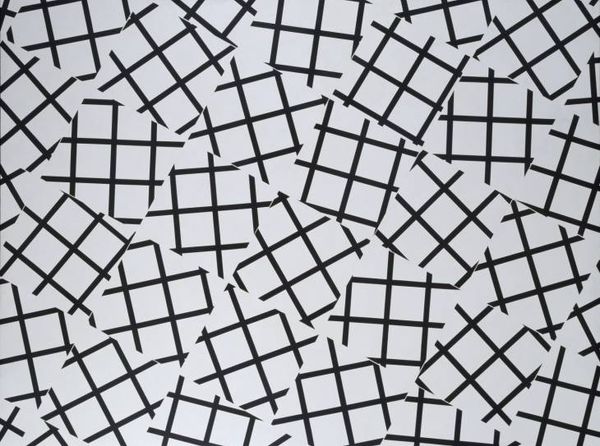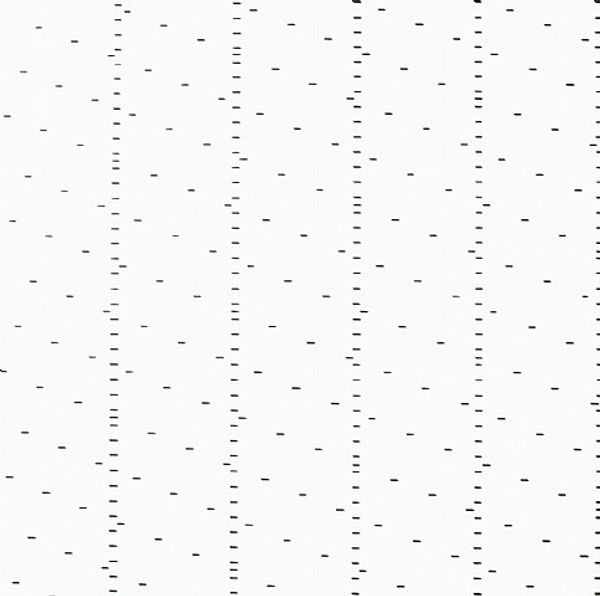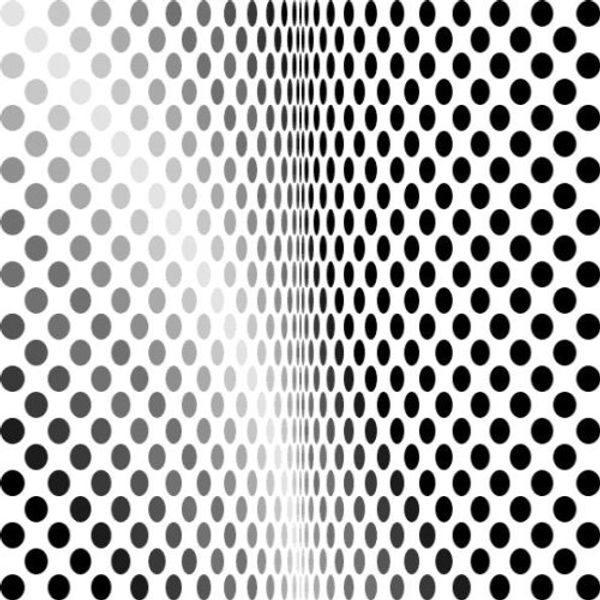
#
random pattern
#
op-art
#
minimalism
#
circle
#
pattern
#
abstract pattern
#
organic pattern
#
geometric
#
repetition of pattern
#
vertical pattern
#
abstraction
#
line
#
pattern repetition
#
layered pattern
#
funky pattern
#
combined pattern
#
repetitive pattern
Copyright: Bridget Riley,Fair Use
Curator: Standing here, we have before us Bridget Riley's "Composition with Circles 5," created in 2005. It's a stunning example of her continued exploration of abstract pattern. Editor: Wow. It feels… hypnotic. All those intersecting circles—it’s like gazing into a quiet storm. Simple, but with a complex kind of energy. Curator: Precisely. It’s about the perception and process, the making visible of sensation through geometric form. Consider Riley's attention to the repetitive nature, almost like machine production even though I know that is not really the case. There is that impression, right? Editor: You're spot on about the process. The initial sensation, for me, is definitely about touch. I imagine the surface and the act of creating it: layering line by line with infinite patience. Gives me the sensation of peace, that focused concentration. I'd love to know how the labor is divided and organized in Riley's practice, like, who drew what part of it. Curator: Ah, excellent point. I think thinking about what is de-skilled labor is a way into this painting, right? She's deliberately blurring lines of division between artistic and manual. The materials aren't inherently precious; it’s the work and what is abstracted labor and intellectualized as painting that counts. Editor: True, the humbleness is refreshing. You know, seeing all those near-identical elements, like an array, it nudges me towards thinking of it as more than an art object—almost a manufactured commodity or a mass produced print or a fabric design. But knowing it isn't a commodity makes the actual composition shine a little brighter in my eyes. Curator: Absolutely, it's about understanding our relationship to abstraction in both high art and our mundane surroundings. Her genius lies in revealing these interconnected structures, the repetitive patterns underpinning our experiences. What do we take away from knowing these factors, or imposing such restrictions? Editor: Restrictions bring insight. And this talk leaves me considering it again: an intriguing study of controlled chaos. Curator: A fitting end, I’d say. Another remarkable demonstration of art being tied to the way of life, as much about the artwork’s context, as the object itself.
Comments
No comments
Be the first to comment and join the conversation on the ultimate creative platform.
